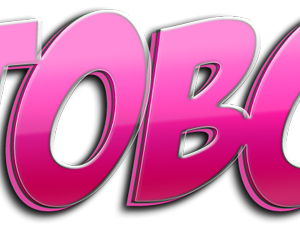
Happy New Year everyone! After an extended break I’m coming back online. I’m going to be posting a little less frequently than I did in 2010, mainly because I found it very difficult to juggle all the writing with other commitments. As I expect 2011 to be a busy year, I’m going to be trying to strike a healthy balance between my work and my writing. At least until I get a Pulitzer for my story on The Great Tampon Caper I wrote last year. To start 2011 off with a bang, I’d like to republish an article that is dear to me. This was originally published on Project@Work in June 2010.
When I was a child, there was wonder to be had pretty much everywhere. There was Santa Claus and the Tooth Fairy, unicorns and fire-breathing dragons. My parents were rich storytellers and when my sister and I would ask how things came to be, they had a talent for infusing us with a genuine sense of possibility.
As we grew older, we broke the boundaries of parental control. We did more things on our own. We watched more TV, read more books, interacted with friends, and reached out into the world to inform ourselves. As we exposed ourselves to more and more and more noise, it started to drown out the magic and possibilities we learned as children. Somewhere along the line, noise obscured the magic completely.
Thus we entered the workforce.
At the time we didn’t notice, but that core shift towards the practical and away from the magical hurt our ability to think.
As project managers, we are taught early to use the language of spreadsheets and performance metrics. We report on percent complete. The management of these details that allow us to get to end of job, and these things are essential. But although these details can be painstaking, they’re noise. That noise that keeps us out of touch with magic. We forget why we’re monitoring our projects. Our work is ordinary because, well, we’ve let ourselves become ordinary. It’s the barrier that keeps us from being great.
Software projects produce good software when their leader uses the PMBOK (for example) as a recipe, and follows all the steps. The finished product is the end, and best practices are the means. Because other people write best practices, the project manager has little personal ownership of the route. He or she is following a script written by another—and there’s nothing wrong with that. That route is well worn, and the end product will generally meet the needs of the project sponsor. We need workhorse projects like these, so that’s not a criticism.
On the other hand, software projects produce great software when their leader witnesses the implications of the finished product in a vision. A paradigm shift is the end, and the finished product is the means. In other words, because of the project manager’s vision, the world will change.
Looking at it from that perspective, the processes and tools we use to realize the vision are completely disposable. The individual steps we take are irrelevant in the face of true vision. A great project manager will articulate their vision, and let it ignite high in the air for the entire team to see. “This is what we’re doing,” the sorcerous PM will proclaim. “This is why we’re here.” They will carve their own path in pursuit of that goal, and they’ll do it with unmatched zeal.
A great project manager realizes that although a lifetime’s worth of noise obscured the magic of possibility, it’s all still there, waiting to be reclaimed. Retrieving it and making it one’s own creates impassioned followers rather than project teams.
These loyalists, hungry for the light the PM possesses, will do whatever they have to, as long as they can contribute towards the PM’s vision. They will take ownership of their work. They will plan and prioritize for themselves. They will take initiative in unexpected ways that smoothes the journey for everyone involved. The PM doesn’t need to manage them.
Under those circumstances, best practices don’t hold up quite as well. In many cases they become a hindrance. By using a magic they found within themselves, the PM has already stepped off the trodden path where mainstream documentation is harder to find.
Does that mean you, as a project manager should eliminate best practices from your repertoire? No. The more techniques you know, the faster you can knock down barriers in your way. These are just tools, though, and should be used or discarded as necessary to reach a goal. Spending time deliberating which technique to use takes everyone’s eyes off the goal. Watch how fast the light fades from your followers’ eyes when you bring them back to the mundane. In a way, you’ve betrayed them.
So why should the project manager be the one to craft the vision? Why can’t the sponsor do that and let the PM off the hook?
Unfortunately, it falls to the project manager by default. While project sponsors may initiate the work, they’re unlikely to see enough pieces individually to ignite passion in an army of people. Sponsors may have more informed elements than others, but their insight is incomplete. It’s the PM who has to track down the other stakeholders and collect the pieces. So only the PM is poised to see how all the pieces fit together.
What wonderful, creative potential that is, to hold all the pieces of something not yet understood in the palm of your hand! There’s power there that can only belong to the curators of creation. That’s you.
The trick is you have to see it for what it is.




